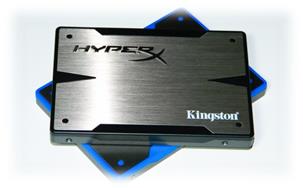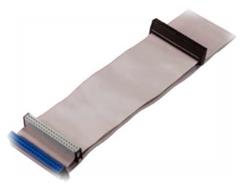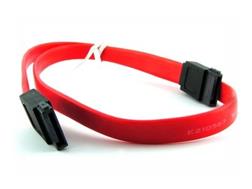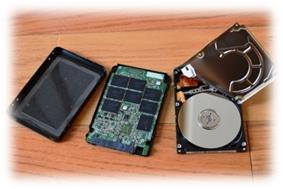Show me the SSD!

- Lack of awareness of SSDs
- High cost
I’m also one among you, if you don’t have a SSD.
So how a SSD will look like?
Basically it’s very simple. It looks like a smaller HDD or bigger battery enclosed inside a plastic or metal cover. Like HDD, SSDs are connected to motherboard through SATA cables.
SATA vs. IDE
If you are a very basic user, you may skip to next heading, because this section is somewhat advanced and it deals with advantages of SATA over IDE.
IDE is an older interface, through which hard disk drives were connected to motherboard years before. But SATA was introduced only in 2007 and it serves as the common connector to connect HDDs and SSDs with motherboard till date.
IDE is parallel ATA, SATA is serial ATA.
Generally parallel connectors are getting obsolete in computers for e.g. USB replaced most of the parallel ports in computer.
How IDE cable looks like?

- One will be connected to motherboard
- Other two will be connected to HDD
But there are some shortcomings in IDE and the major one in that is its speed limit, 133 MB/s (data transfer speed).
Speed of SATA starts from the maximum speed limit of IDE. SATA supports from 150 MB/s to 750 MB/s (data transfer speed).
How SATA cable looks like?

- One is connected to the motherboard
- Other is connected to the device (SSD or HDD)
One more issue faced with IDE is the configuration of master and slave, which is done through a dipper pin arrangement, but in SATA only one device can be connected to a cable so master slave arrangement can be selected in BIOS itself.
SATA cables are much thinner or sleek compared to IDE cables, so it allows better airflow inside the cabinet thereby paving way for the heat to go out smoothly. Another advantage of SATA cable is that it can run for up to 1m, whereas IDE cables can run up to a maximum length of 18 inches only.
How SSD is better than HDD?
First of all SSD is more compact than HDD
- It’s almost 2 times faster than HDD
- Also SSD consumes half the power consumed by HDD
- No noise will be generated from SSD as there are no moving parts found in SSD
Data stored in SSD has double the lifetime of a normal human being and these data are not corrupted when prone to magnetic field, but that’s not the case in HDD. But still there are some limitations in SSDs. SSDs are limited to certain number of write cycles, after which they become like a ROM (Read only memory) that is you can only read what is stored in a SSD, but cannot write any new files or data to it.
How SSD works?
Do you know how pen drive works?

Coming to the working of SSDs, they store data in microchips called NAND drives. Reading and writing 0s and 1s are just based on charging or not charging transistors. Let me stop with this, as I don’t want to make it more complicated.
So SSD can read two data from two different proximities, much faster, compared to HDDs. That’s why even a casual user can see a considerable difference in speed while operating their computer. A professional user like media creators will see a great difference, if they use SSD.
The best way to use SSD is to install OS and mostly used software in a partition in SSD. Other things such as important documents, photos, videos can be stored in a HDD, so that you will get both high speed and large capacity.
If you’re already using HDD, then simply you may buy a 60 GB SSD and install OS and other most used software in that SSD, so that you will get quick boot time as well as a cheaper solution to large capacity by using your existing HDD. Though SSD has been priced much lesser than their price during the introduction, it’s still much higher, compared to the price of a HDD. So at present SSD can’t replace HDD, but can complement it.

Contents are so crisp and apt……. Very easy to understand….
your photogrph look like real one ,i think u spend more time for that not only in this 16th day over all every pictures in ur program EXALLENT .IT STIMULATE to read the contant very good work
So the Future of storage devices in PC will be SSD instead of HDD??
Absolutely